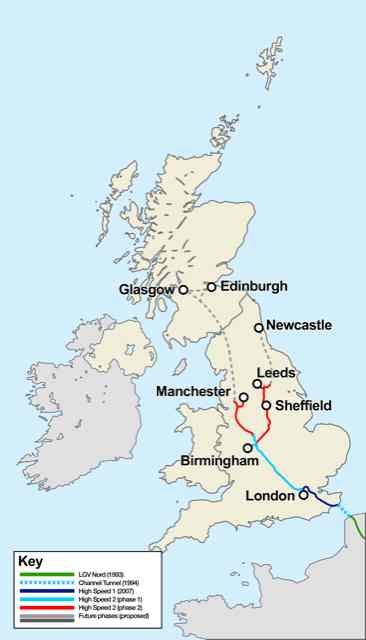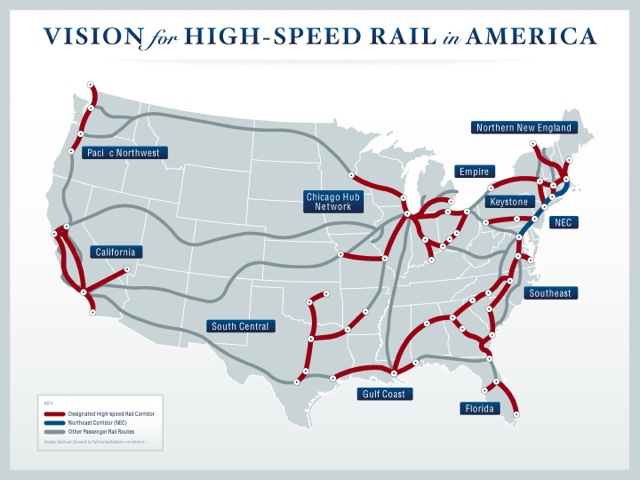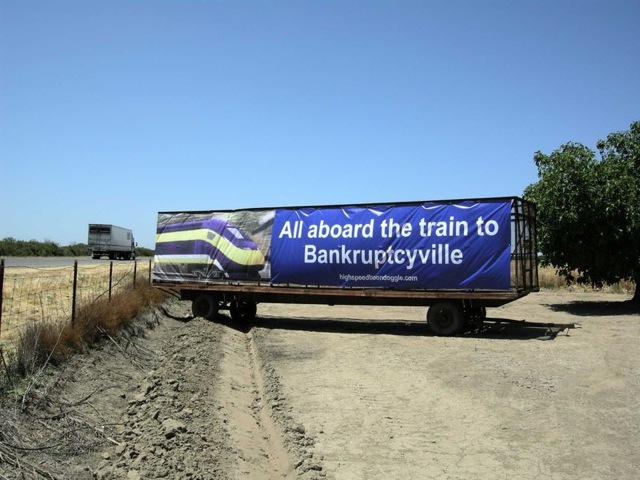High-speed rail fortunately appears to be dead in the United States, but it is still alive and kicking taxpayers in England. In the last decade, the country spent 11 billion pounds (about $18 billion) building high-speed rail about 67 miles from London to the Channel Tunnel, a project known as High Speed 1. Ridership was disappointing: the private company that operates it expected revenues would cover operating costs, but instead has required government subsidies of more than 100 million pounds per year.

Click image for a larger view.
Despite this, politicians and rail contractors want to spend at least 43 billion pounds (more than $70 billion) on High Speed 2, from London north to Manchester and Leeds. Manchester is about 200 highway miles from London, and the rail line promises to cut a bit more than an hour off of people’s highway journeys. However, the train will take about the same amount of time as flying, and by my count there are currently 13 flights a day between London and Manchester.









